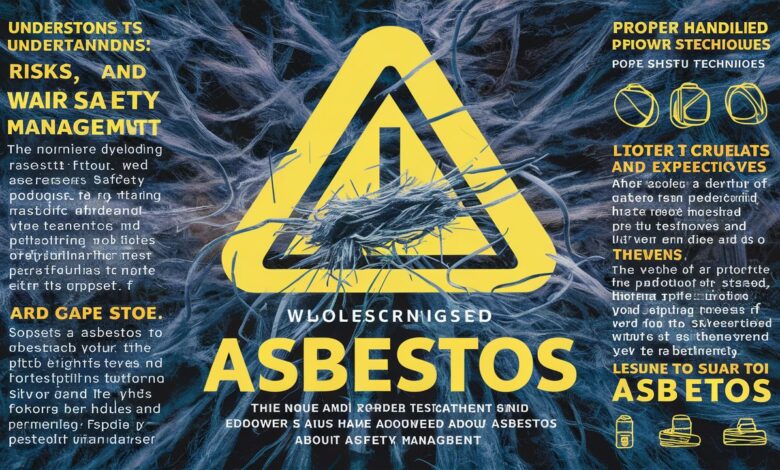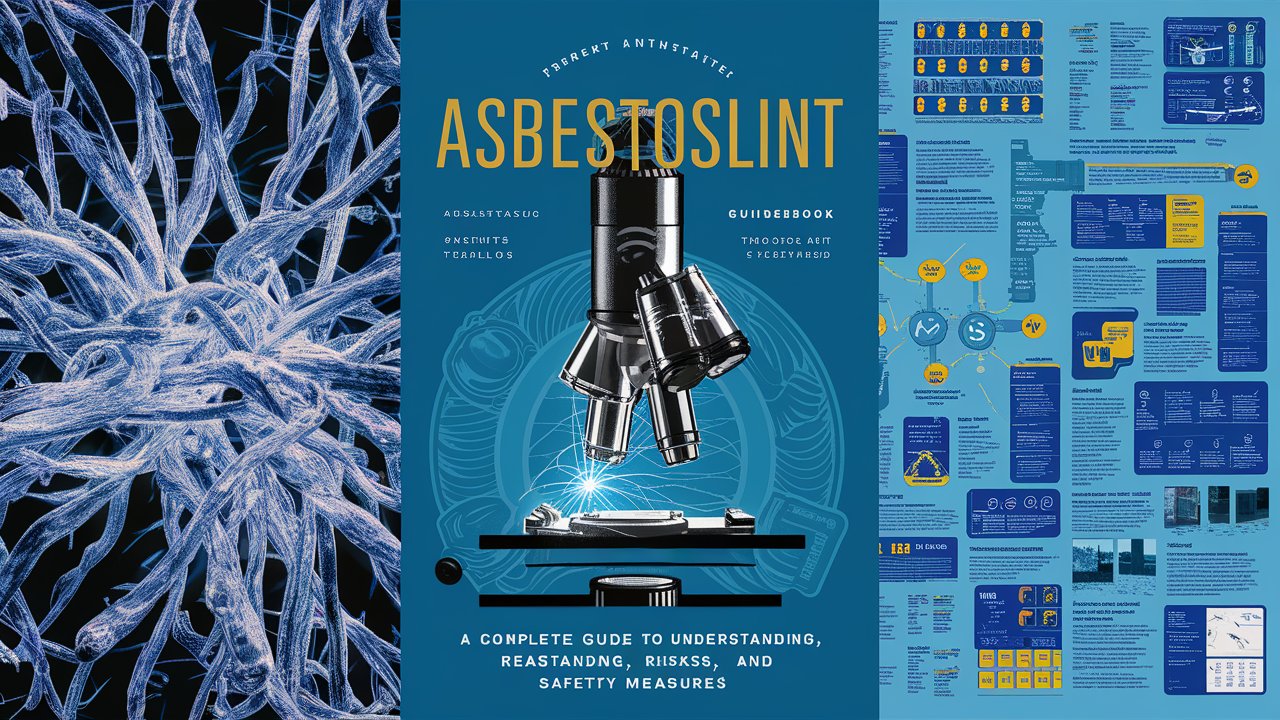Asbestlint: A Complete Guide to Understanding, Risks, and Safety Measures

Asbestlint is a term that has gained significant attention due to its association with asbestos particles and fiber dust contamination. This material, often invisible to the naked eye, poses serious health risks when inhaled. Asbestlint usually forms when asbestos-containing materials (ACMs) are disturbed, releasing microscopic fibers into the air. Prolonged exposure can lead to chronic illnesses such as asbestosis, mesothelioma, and lung cancer.
In this comprehensive article, we will explore the origins, dangers, detection methods, safe removal techniques, legal guidelines, and preventive measures related to asbestlint, ensuring you have a complete understanding of its impact on both health and the environment.
What is Asbestlint?
Asbestlint refers to the fine fibrous dust that comes from asbestos products such as insulation, roofing, ceiling tiles, and flooring materials. Unlike visible lint or dust, asbestlint particles are microscopic, which makes them especially dangerous. Once disturbed, these fibers remain airborne for long periods, increasing the risk of inhalation.
The durability of asbestos was once highly valued in industries, but the hidden dangers of asbestlint exposure have made it one of the most strictly regulated hazardous materials worldwide.
Health Risks of Asbestlint Exposure
Exposure to asbestlint fibers is a major public health concern. These fibers are sharp, durable, and resistant to the body’s natural defense systems. Once inhaled, they can embed deep into the lungs, pleura, and other organs, causing long-term damage. The primary health risks include:
-
Asbestosis: A chronic lung disease that causes scarring of lung tissue, leading to breathing difficulties.
-
Mesothelioma: A rare but aggressive cancer affecting the lining of the lungs, heart, or abdomen.
-
Lung Cancer: Long-term inhalation of asbestlint significantly increases the risk of lung cancer, especially among smokers.
-
Pleural Disorders: Non-cancerous conditions such as pleural plaques, pleural effusion, and thickening of lung membranes.
Unlike other occupational hazards, the effects of asbestlint often appear decades after exposure, making early detection and prevention crucial.
Common Sources of Asbestlint
Asbestlint is most commonly found in:
-
Construction Materials: Roofing shingles, floor tiles, cement sheets, and insulation.
-
Industrial Sites: Factories, shipyards, and power plants.
-
Older Homes and Buildings: Popcorn ceilings, heating ducts, and pipe insulation.
-
Demolition and Renovation Work: Disturbing old asbestos-based materials releases high levels of asbestlint into the air.
Identifying these sources before starting any renovation or demolition project is essential to avoid unintentional exposure.
How to Detect Asbestlint
Detecting asbestlint requires professional testing, as the fibers are not visible to the naked eye. Common methods include:
-
Air Monitoring: Special pumps collect air samples to detect fiber concentrations.
-
Bulk Sampling: Small material samples are tested in a laboratory.
-
Microscopic Analysis: Polarized light microscopy (PLM) or transmission electron microscopy (TEM) is used to confirm the presence of asbestos fibers.
DIY testing is not recommended, as disturbing the material may worsen exposure risks. Always rely on licensed professionals for accurate detection.

Safe Removal and Management of Asbestlint
If asbestlint contamination is confirmed, immediate professional abatement is necessary. Safe removal includes:
-
Sealing the Area: Preventing fiber spread by isolating the contaminated zone.
-
Wet Removal Method: Spraying water or sealants to minimize dust release.
-
HEPA Filtration: Using high-efficiency particulate air vacuums to capture fine fibers.
-
Protective Gear: Workers wear respirators, gloves, and disposable suits.
-
Disposal Regulations: Asbestlint waste must be sealed in airtight containers and disposed of in designated hazardous waste facilities.
Never attempt to remove asbestos-containing materials without professional guidance. Mishandling can result in severe contamination and health risks.
Legal Regulations Surrounding Asbestlint
Governments across the world have implemented strict laws on asbestos management:
-
United States: The Environmental Protection Agency (EPA) and Occupational Safety and Health Administration (OSHA) regulate asbestos use and exposure.
-
European Union: Asbestos has been completely banned since 2005, with strict guidelines for removal and disposal.
-
Australia & Canada: Nationwide bans on asbestos production and import have been enforced.
Violating these laws can result in severe penalties, fines, and even imprisonment. Compliance with regulations is mandatory for property owners, contractors, and businesses dealing with asbestos materials.
Preventive Measures Against Asbestlint Exposure
To minimize the dangers of asbestlint, preventive steps are essential:
-
Regular Inspections: Especially in older homes and buildings.
-
Avoid DIY Renovations: Hire certified asbestos abatement professionals.
-
Proper Ventilation: Use air purifiers with HEPA filters in high-risk areas.
-
Awareness Training: Workers in construction and demolition should undergo asbestos safety training.
-
Use of Modern Alternatives: Replace asbestos-containing products with safe substitutes such as fiberglass, cellulose, and polyurethane foam.
Environmental Impact of Asbestlint
Apart from health risks, asbestlint pollution also has long-lasting environmental effects. When fibers settle in soil or water, they can remain intact for decades, posing risks to animals, plants, and ecosystems. Improper disposal of asbestos waste can contaminate groundwater, soil, and air quality, affecting communities far beyond the initial exposure site.
Conclusion
Asbestlint represents one of the most dangerous forms of environmental and occupational hazards. Its microscopic fibers pose life-threatening health risks, making detection, regulation, and prevention critical for protecting human lives. With proper awareness, professional handling, and strict legal enforcement, we can reduce exposure risks and safeguard both current and future generations.
FAQs about Asbestlint
Q1: Is asbestlint visible to the naked eye?
No, asbestlint particles are microscopic and cannot be seen without specialized equipment.
Q2: Can I remove asbestlint myself?
No, asbestos removal must always be handled by licensed professionals to avoid health hazards.
Q3: How long does it take for asbestlint-related diseases to appear?
Most asbestos-related illnesses appear 10–40 years after exposure, making early prevention crucial.
Q4: Are there safe alternatives to asbestos?
Yes, materials like fiberglass, cellulose, and polyurethane foam are commonly used as safe substitutes.
Q5: What should I do if I suspect asbestos in my home?
Do not disturb the material. Contact a certified asbestos inspector for testing and guidance.


